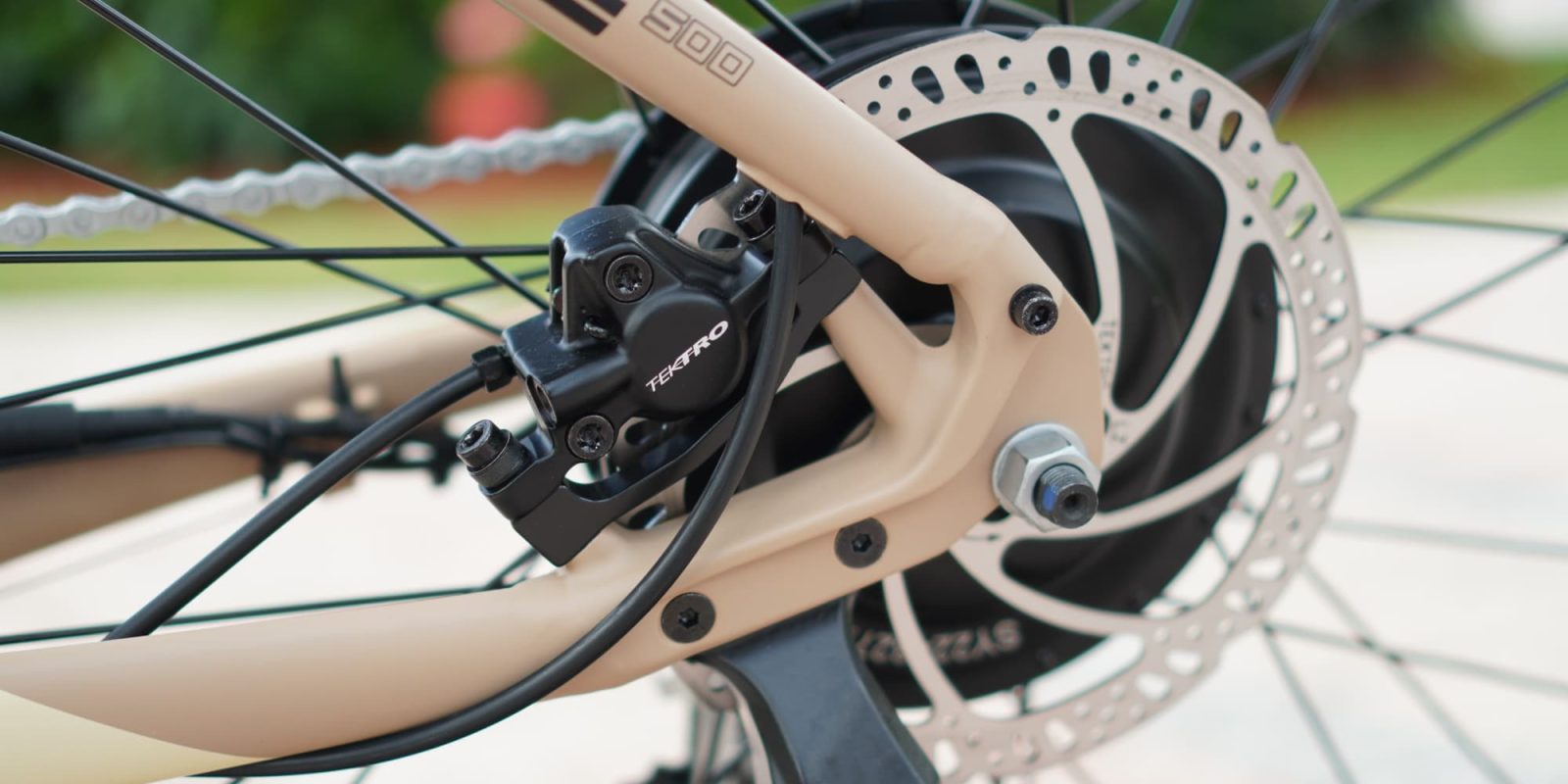
Electric bicycles are a popular means of transportation that combine the advantages of traditional bikes with the benefits of modern technology to provide a gentle (or sometimes powerful) boost to the rider. As e-bikes continue to gain traction and increase in popularity, one crucial element for new and experienced riders alike to consider is the braking system. It’s hard to imagine a more critical piece of safety equipment on a bicycle, and the need for reliable and efficient braking becomes even more important when dealing with the increased speeds and weights typical of e-bikes.
The two most common types of disc brakes on e-bikes are mechanical (also known as cable-actuated) and hydraulic. They both have a lever on the handlebars and a disc rotor on the wheel, but differ in the way they actually engage the brake pads on that disc rotor.
Both have their pros and cons, and the choice between them often boils down to personal preference, riding conditions, and budget. Let’s dive into the key differences between mechanical and hydraulic disc brakes so that we can shed some light on the debate and guide you in making an informed decision.
Mechanical disc brakes: basics and benefits
Mechanical disc brakes work on a simple principle: when you squeeze the brake lever, a cable tightens, forcing the brake pads onto the disc rotor attached to the wheel, slowing the bike down.
When it comes to disc brakes, this is as simple as it gets, which is why you’ll find mechanical disc brakes on most budget e-bikes. Until recently, it was common for e-bikes priced at below $1,500 or so to always feature mechanical disc brakes, but that is starting to change as prices continue coming down. Just recently, Lectric eBikes grabbed headlines by reintroducing the Lectric XP 3.0 with hydraulic disc brakes while keeping the price at the same $999.
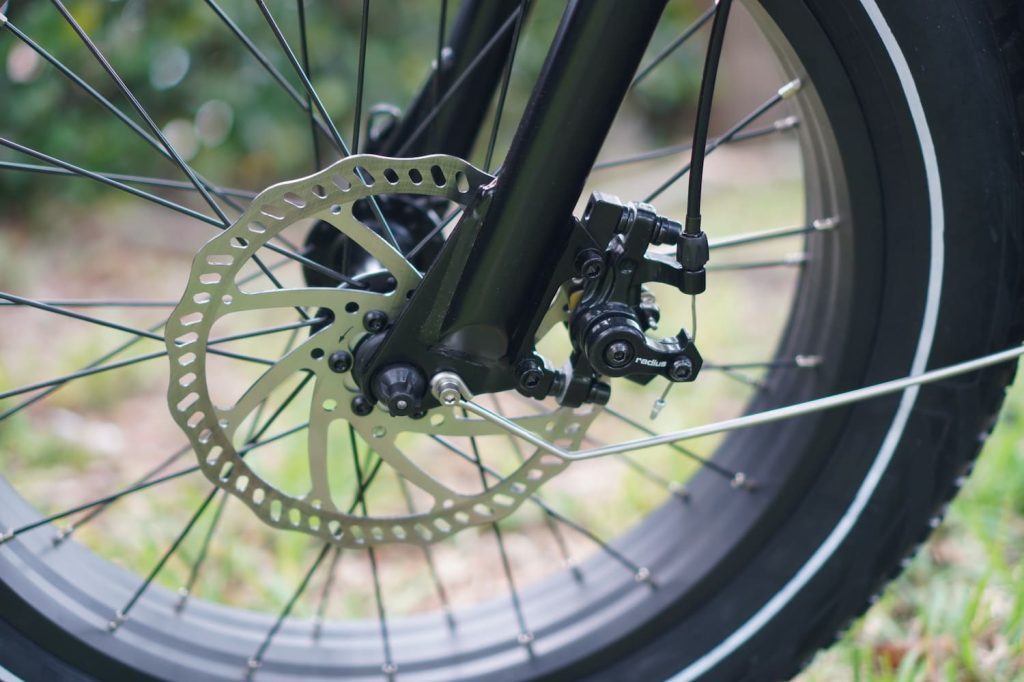
Affordability
Because of their simplicity, one of the main advantages of mechanical disc brakes is their cost. They are generally cheaper to purchase and maintain compared to their hydraulic counterparts.
This can be a significant deciding factor for riders on a budget or those who don’t require the additional features that come with hydraulic systems.
Many people think that because mechanical disc brakes are cheaper, that means they aren’t as good. And while it’s true that hydraulic disc brakes have several advantages (and result in their higher cost), mechanical disc brakes can still be highly functional and effective.

Simplicity and maintenance
Mechanical brakes are relatively simple to service. Adjustments and repairs can often be performed without specialized tools, and the system is generally more forgiving to DIY enthusiasts. Most mechanical disc brakes can be serviced with a single tool: a 5mm hex wrench (though some may require a 4mm or 6mm, depending on the model or task).
If you’re a long-distance or touring rider – or you just don’t keep a pile of specialized bicycle tools in your garage – being able to fix your brakes with commonly available tools can be a big advantage.
However, maintenance is a double-edged sword when it comes to mechanical disc brakes. They are easier to maintain (no hydraulic lines to bleed, for example), but they require much more frequent maintenance. Sporadic riders might only have to fiddle with their brakes every few months, but daily commuters could end up adjusting their mechanical brakes several times a month as the cables regularly stretch from normal usage.
Modulation
While mechanical brakes might not offer the same level of modulation (the ability to vary the braking force) as hydraulic brakes, they still provide ample control for most casual and commuter riders.
If you’re not a technical rider and don’t regularly ride on mountain bike trails or in races, then you probably won’t mind the reduced modulation of mechanical disc brakes. But when it comes to more advanced riding, especially mountain biking, the increased modulation available in hydraulic brakes is an important feature.
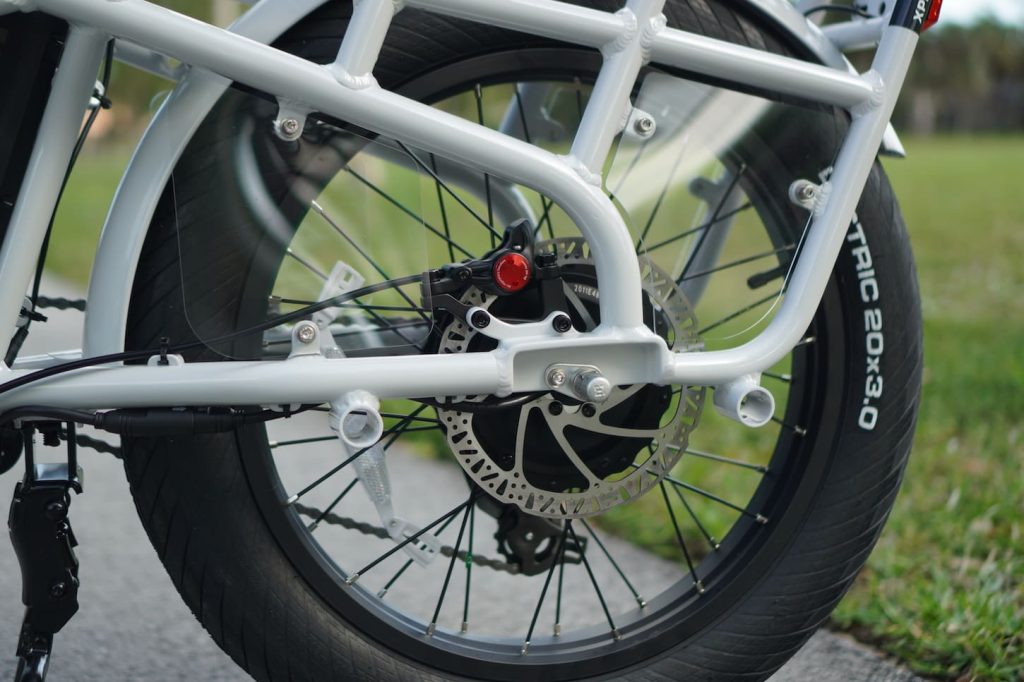
Hydraulic disc brakes: A step up
Hydraulic disc brakes are more complicated than mechanical disc brakes because they use a sealed system filled with hydraulic fluid (also called brake fluid). When the brake lever is squeezed, it pushes the fluid through the system, forcing the brake pads onto the disc rotor.
It’s been common in cars for a century, but hydraulic brakes have only started becoming popular in electric bikes in the last 5-7 years. Before that, they were largely seen as a luxury item on only the nicest bikes. Now, though, you’ll find them on budget models and nicer e-bikes alike (though the higher end models have significantly higher quality hydraulic brakes).
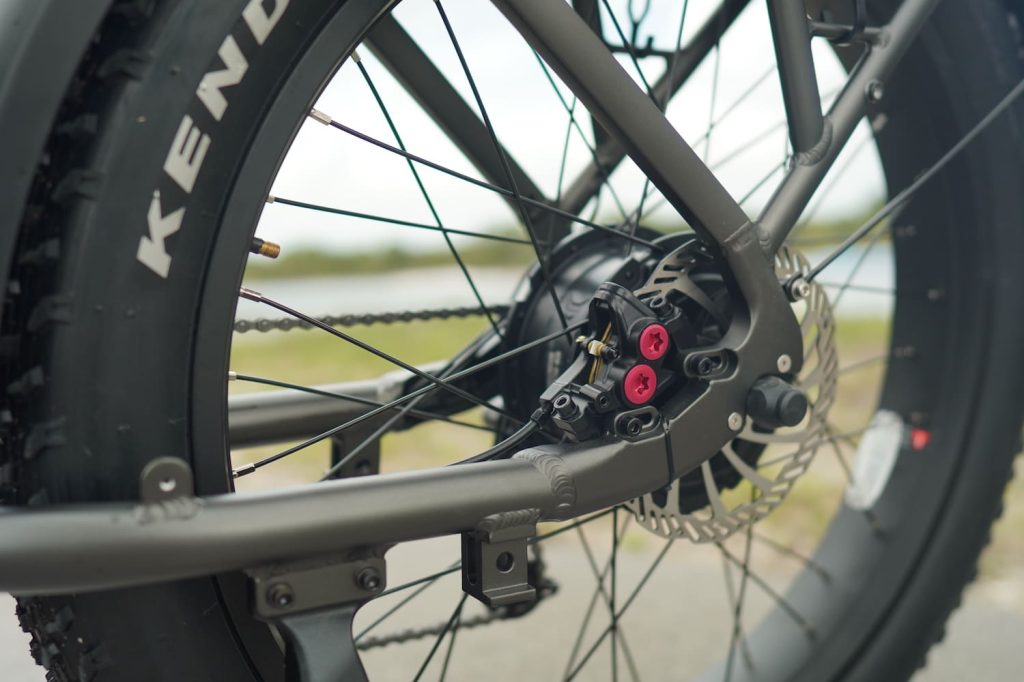
Power and precision
One of the biggest advantages of hydraulic disc brakes is the superior stopping power and precision. Hydraulic brakes require less force to engage, and they deliver this force more evenly to the rotor. This means that a light pull on a hydraulic brake lever can produce a strong braking response.
Many people use just one finger to pull the brake lever on their hydraulic disc brakes, leaving more fingers on the handlebars for better control.
The extra stopping power can also be useful on heavier e-bikes or electric cargo bikes, especially when carrying passengers.
Better modulation
Hydraulic disc brakes offer better modulation compared to mechanical brakes. This superior control allows riders to brake more effectively under different conditions, a feature particularly useful for mountain biking or riding on uneven terrain.
Again though, if you’re a recreational rider that doesn’t push too hard in technical terrain, you likely won’t have to worry too much about the nuance of brake modulation.
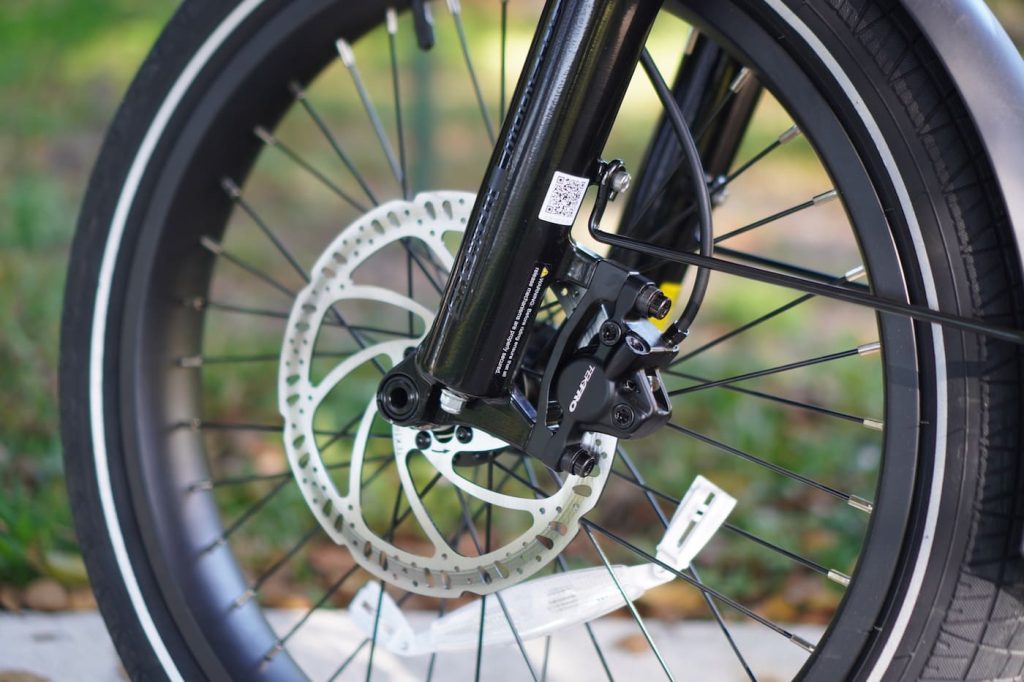
Low maintenance
Hydraulic disc brakes require less routine maintenance than mechanical ones because they self-adjust for pad wear. For casual riders, a yearly brake pad replacement might be enough, though more frequent riders may need to replace pads a few times a year.
For most riders, especially those that perform mostly commuter-style or recreational riding, you’ll never need to bleed your hydraulic disc brakes or replace the oil. However, electric mountain bikers may need to perform these steps more frequently, especially on the more sophisticated yet also maintenance-prone hydraulic disc brakes found on expensive electric mountain bikes.
So while maintenance is much less common on hydraulic brakes than mechanical brakes, when maintenance is required, it’s typically more complex and may require professional assistance from your local bike shop.
The verdict: Weighing the pros and cons
When it comes to choosing between mechanical and hydraulic disc brakes for your e-bike, it largely depends on your specific needs, riding style, and budget.
Hydraulic brakes offer superior performance in terms of power, precision, and modulation. They are a fantastic choice if you frequently ride in hilly areas, engage in off-road adventures, or just want the best performance and are willing to pay for it. They also help avoid the dangerous situation that can occur when new riders don’t properly maintain their mechanical brakes, allowing the cables to stretch to the point at which braking power diminishes to unsafe levels.
On the other hand, mechanical disc brakes (when maintained properly) still provide sufficient stopping power for most riders and conditions, especially those using e-bikes for commuting or leisurely rides. Their lower cost, simplicity, and ease of maintenance can make them a practical choice for many situations.
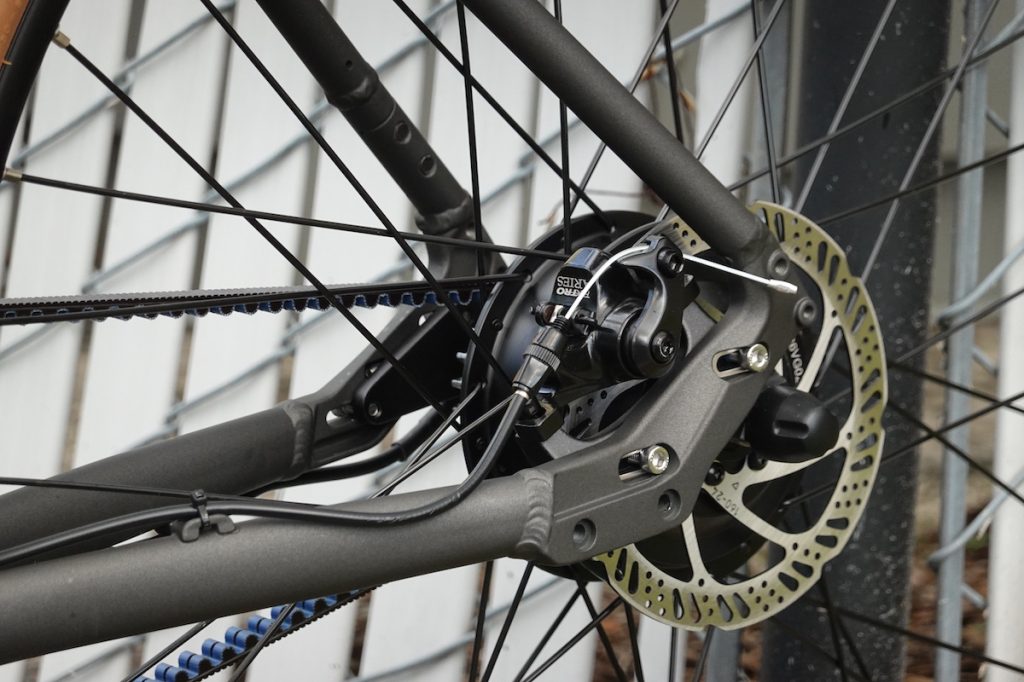
In conclusion, while hydraulic disc brakes generally outshine mechanical ones in performance and control, it’s important to remember that mechanical brakes have their own set of advantages that should not be overlooked. They may lack the raw power and fine-tuned modulation of hydraulic systems, but they are still capable, dependable, and more than sufficient for many riders and riding scenarios.
In the realm of e-bikes, where speeds can exceed that of traditional bicycles, safety is paramount, and the effectiveness of your brakes plays a crucial role. If you find yourself regularly riding in challenging conditions, such as steep descents or rough terrains, the added investment in hydraulic brakes can be well worth it for the enhanced stopping power and control.
That being said, if your rides typically involve flat, paved paths or moderate inclines, and your main considerations are affordability and ease of maintenance, then mechanical disc brakes should serve you well. While they may not offer the bells and whistles of hydraulic systems, they still provide reliable performance and safety, which is the essential role of any braking system.
Above all, whichever braking system you choose, it is vital to keep it well-maintained and regularly checked for safety. After all, even the best braking system can only perform as well as it is maintained.
FTC: We use income earning auto affiliate links. More.





Comments